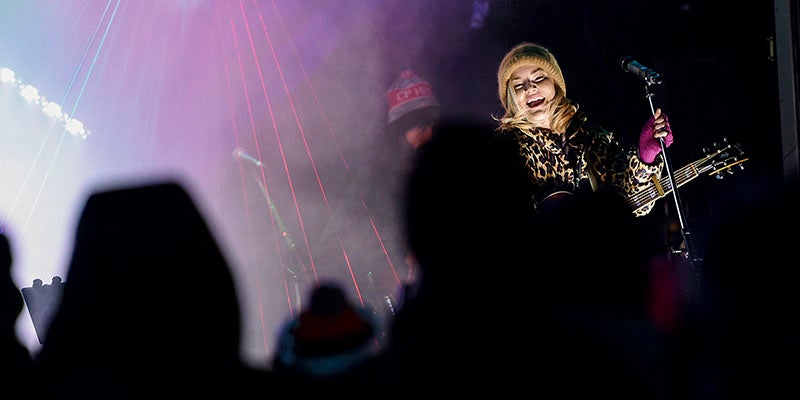Thanks to LEDs, holiday displays get more efficient
Published 2:45 pm Thursday, December 24, 2015

Organizers of the Bentleyville Tour of Lights in Duluth say 80 to 85 percent of the 3.5 million lights that fill Bayfront Park this year are LEDs. Derek Montgomery/For MPR News in 2014
By Elizabeth Dunbar
MPR.org/90.1 FM
Many people find holiday lighting displays beautiful. But how much energy do those displays use?
Quite a bit. Those who design and install holiday displays have been making the transition to more efficient LED bulbs, but they still have a ways to go.
At a home in Sunfish Lake, a crew from Custom Christmas Lighting was at work recently, putting the finishing touches on a huge display. Rob Schlosser, who owns the lighting business, opened another package of warm-white LEDs. Strings of red, white and green lights hung from a couple of hundred pines lining the curved driveway.
Schlosser said this display is 100 percent LED.
“Could not be done without LEDs,” he declared. “Would not be feasible. Wouldn’t work.”
Schlosser said the home’s electrical system wouldn’t be able to handle the load if the display used traditional incandescent lights. According to the Department of Energy, LEDs consume at least 70 percent less energy than incandescent bulbs. LEDs cost more up front, but the energy savings can make the switch worth it, especially if you use a lot of lights.
Schlosser adds LEDs to his stock every year, and said they make up about 65 percent of his inventory now. But while LED manufacturers are getting better at mimicking the softer look of incandescent lights, some people still cling to the old lights.
“Sometimes people will call me and they’ll say, ‘I want an old-school house like when I was a kid,’” he said. “And this is an older person, and I’ll say, ‘You mean like Chevy Chase or you mean like Norman Rockwell?’ It doesn’t happen too often, but when I have that client, I can’t give them an LED.”
The transition from incandescent holiday lighting is part of a larger movement toward LEDs. Dan Thiede, with Clean Energy Resource Teams, said people are embracing LEDs for a variety of reasons.
“They’re safer because they don’t get quite as hot, they’re sturdier so they’re not as liable to break on you, and they’re nicer to install because they use so much less energy that you can connect like 25 of the strings end to end without overloading a socket,” he said. “And then the fact that they’re better for the environment, because you’re using less energy.”
Solid numbers on the transition to LEDs are hard to come by. For holiday lights, manufacturer Sylvania published a survey this month showing 65 percent of consumers have purchased LEDs; of those, a third bought holiday lights. Online retailer Christmas Lights, Etc., said 57 percent of its consumers prefer LED holiday lights to traditional lights.
As for the regular lamp market, data from the National Electrical Manufacturers Association show that LEDs now make up about 15 percent of the market, compared to less than 1 percent just two years ago.



